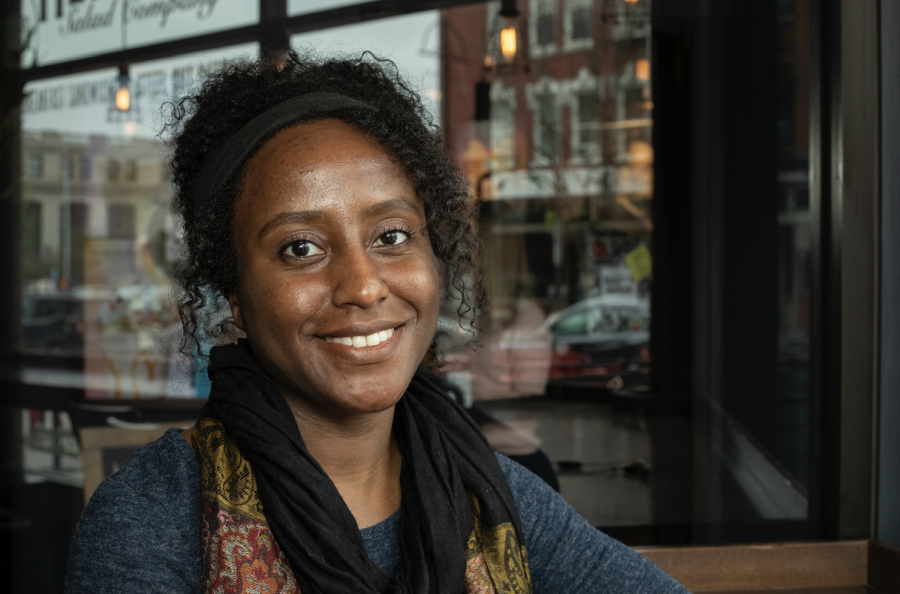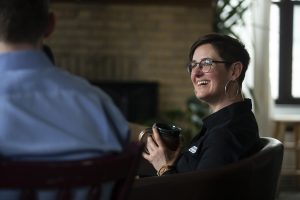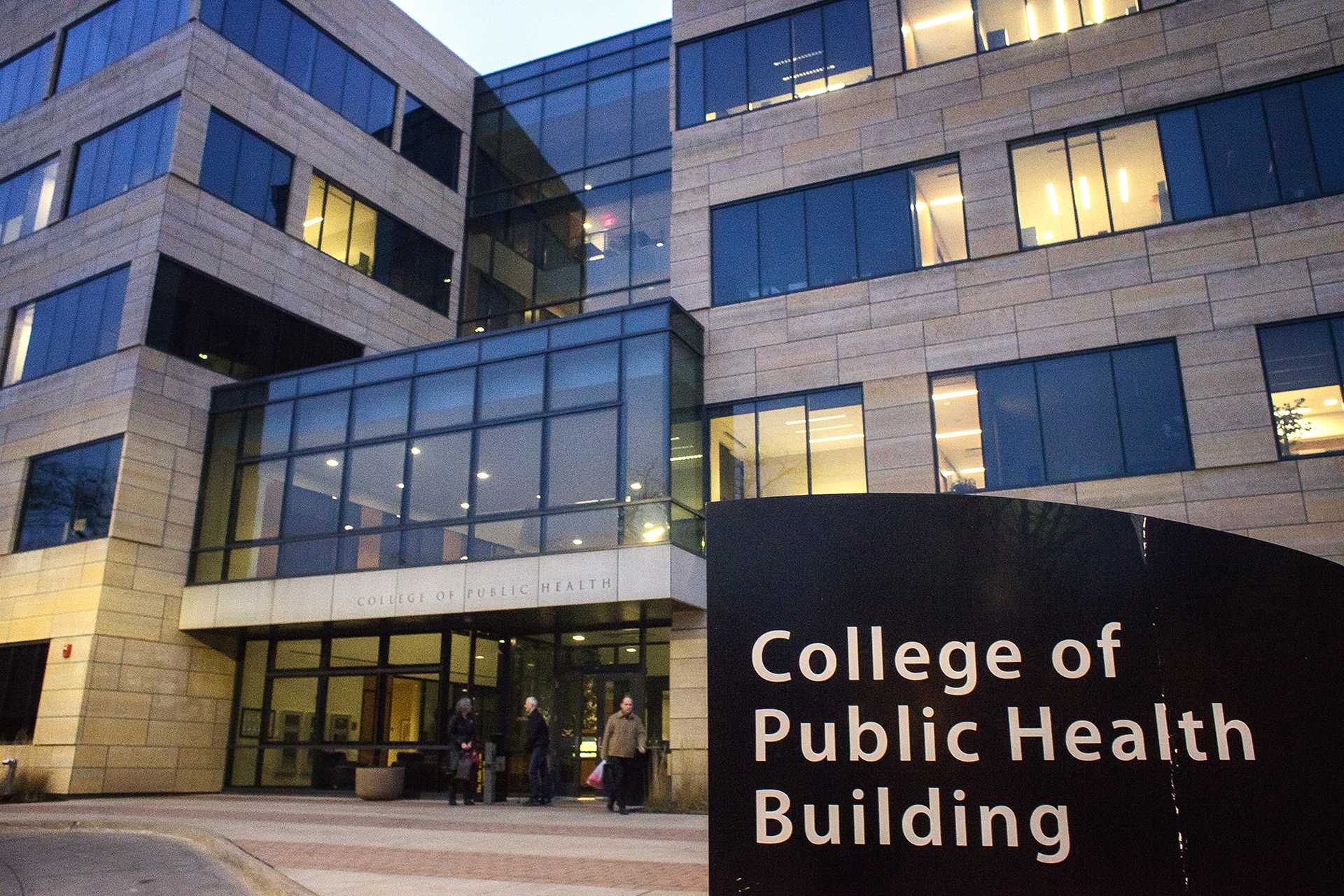Grad student aims to improve Iowa water quality
UI graduate student Robyn Williams has used her program in sustainable water development to create a project to ignite change in Iowa’s water quality.
University of Iowa Graduate Student Robyn Williams poses for a portrait in The Java House on Wednesday, May 1, 2019.
May 2, 2019
In 2017, University of Iowa officials notified the campus that the water system had exceeded the EPA’s Safe Drinking Water Standard of 80 parts per billion total trihalomethanes. With this knowledge, UI graduate student Robyn Williams began work on a project to initiate change in Iowa’s water quality.
Williams, who earned an undergraduate degree at Texas State, said she has long been interested in environmental science.
“Our program is the sustainable-water-development program,” she said. “As a part of the program, we have to take an informatics for sustainable systems course. It is about taking data and creating a way for people to easily access information, and it’s easy for the general public to digest. I think the overall purpose is that people want to know more about their water and make sure it’s safe.”
For her project this semester, Williams focused on the English River Watershed, which is a few miles south of Iowa City running from west to east.
“Like most places in Iowa, it is a largely agricultural watershed that grows a lot of corn and soybeans,” she said. “That also has a lot of runoff that contributes to a high amount of nitrate in the water.”
Williams said her adviser, Professor Allen Bradley, gave a simulation of the watershed model, and she was able to use that data from his model to aid her project.
“I used the data in a way that people can look at nitrate information, particularly in the English River Watershed,” Williams said. “It is all simulated data, because the sensors that are available do not have data on the nitrate levels. IIHR is working on that to make more sensors so that people are able to understand what the water quality is in their area.”
Williams is working on the Iowa Watershed Approach, a project to mitigate the financial losses and water-quality issues that stem from agricultural runoff flooding.
Her map is available online.
RELATED: Report finds lack of urgency in addressing Iowa’s water quality
Williams’ instructor in her course, Assistant Professor Ibrahim Demir, said the goal in class is to teach students skills to better educate their research using systems and databases.
“She did a really good job,” Demir said. “She has connected some real-time data from scratch. She started with almost no computational knowledge and was able to learn all of the different aspects of the data. She is focusing on the English River, with lots of background with water-quality issues.”
Demir said Bradley and Williams have worked all semester to develop the map for the state and surrounding communities.
Williams’ program is new to the UI, funded with a National Science Foundation grant, Bradley said.
“It is really important that people in water sustainability have an understanding of these issues,” he said. “Robyn picked her project on the English River to try to predict flow and predict the nutrients in the river. She also wants to make the information available.”
Bradley said the project and the program has been especially interesting for Williams’ career.
“All of this new curriculum is part of a new program we have at the UI,” Bradley said. “Robyn’s work is just an example of what students are learning to do. The sustainable-water-development program is such a great example in our college of how we are advancing graduate education.”






